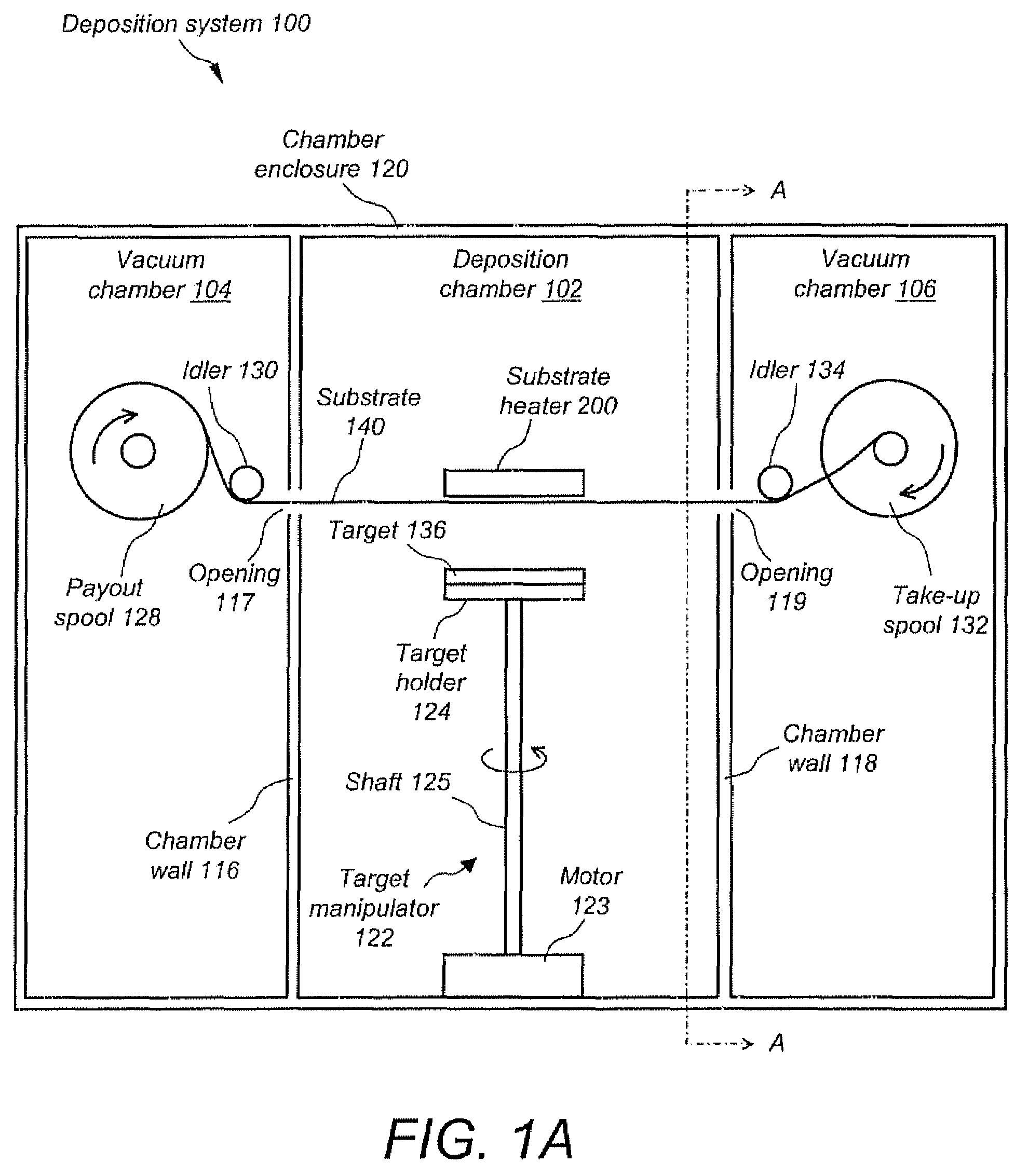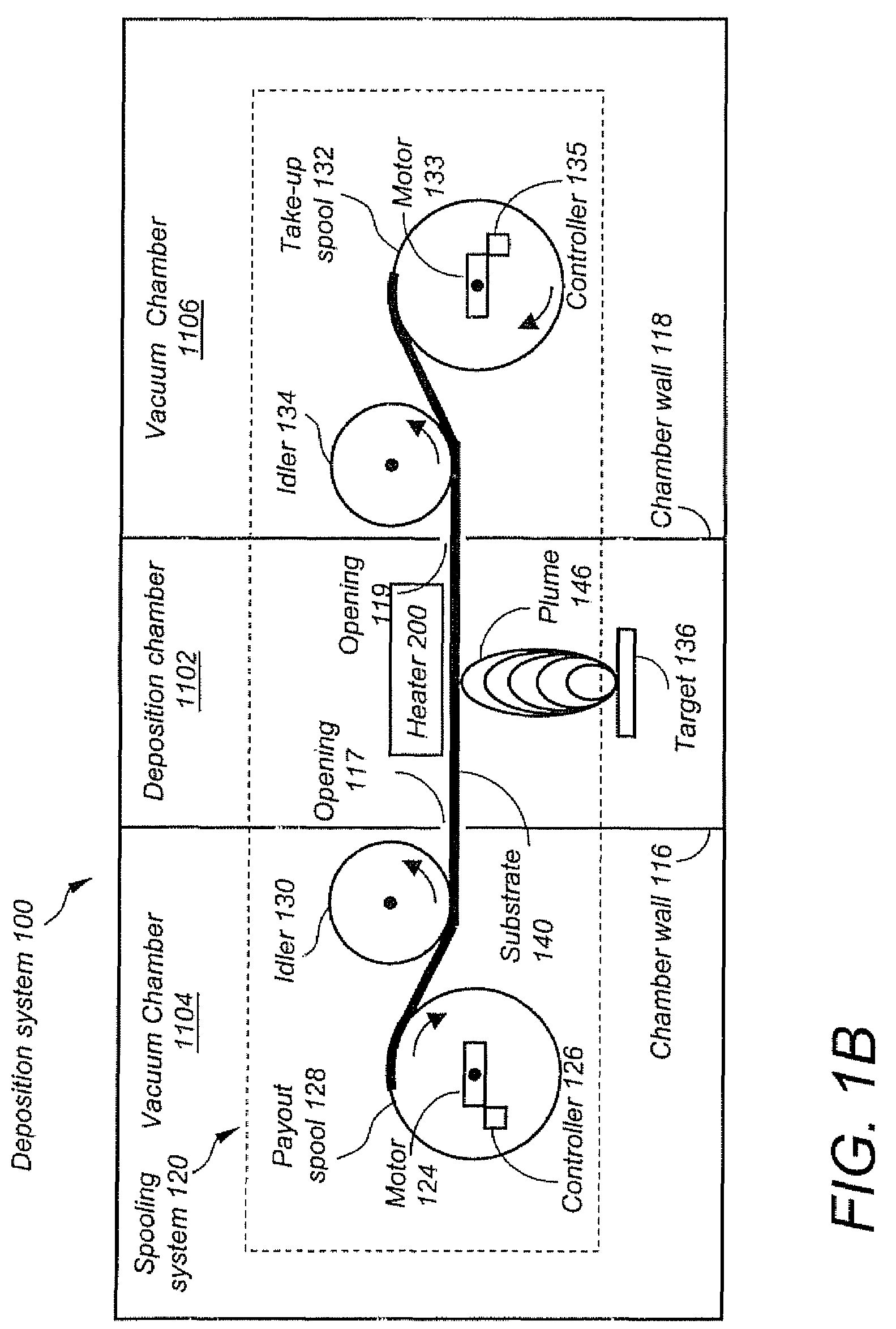High throughput continuous pulsed laser deposition process
a laser deposition and high throughput technology, applied in the direction of superconductor devices, vacuum evaporation coating, coatings, etc., can solve the problems of pushed to the limit of performance by older urban electric power systems in particular, and lengths of coated conductor wire samples have been fabricated
- Summary
- Abstract
- Description
- Claims
- Application Information
AI Technical Summary
Benefits of technology
Problems solved by technology
Method used
Image
Examples
first embodiment
[0120]In a first embodiment, FIGS. 5A and 5B illustrate a top and side view, respectively, of a multi-manipulator assembly 350 of the present invention. The multi-manipulator assembly 350 includes a rotator assembly 310a, a rotator assembly 310b, and a rotator assembly 310c. The rotator assembly 310a further includes a motor 306a mechanically connected to a target holder 124a via a shaft 316a. The rotator assembly 310b further includes a motor 306b mechanically connected to a target holder 124b via a shaft 316b. Likewise, the rotator assembly 310c further includes a motor 306c mechanically connected to a target holder 124c via a shaft 316c. The rotator assemblies 310a, 310b, and 310c are mechanically interconnected by feeding the shafts 316a, 316b, and 316c, respectively, through a support bar 318. The shafts 316a, 316b, and 316c may be solid shafts that pass through the support bar 318 and allowed to rotate via conventional bearing assemblies inserted within the support bar 318. Al...
second embodiment
[0128]In a second embodiment, FIGS. 6A and 6B illustrate a top and side view, respectively, of a multi-manipulator assembly 400 of the present invention. The multi-manipulator assembly 400 is identical to the multi-manipulator assembly 350 of FIGS. 5A and 5B, differing only in that the rotator assemblies 310a, 310b, and 310c are mounted on a support plate 410 instead of interconnecting with the support bar 318. As in FIGS. 5A and 5B, a plurality of the connection rods 320a, 320b, 320c, and 320d are mechanically connected to the support plate 410 at each corner. The position and orientation of the connection rods 320a, 320b, 320c, and 320d is not limited to that shown in FIGS. 6A and 6B. Alternative positions and orientations are possible. As in FIGS. 5A and 5B, a variable-speed actuator (not shown) is mechanically attached to the connection rods 320a, 320b, 320c, and 320d.
[0129]The operation is identical to that of the multi-manipulator assembly 350 described in FIGS. 5A and 5B, di...
PUM
| Property | Measurement | Unit |
|---|---|---|
| length | aaaaa | aaaaa |
| length | aaaaa | aaaaa |
| temperature | aaaaa | aaaaa |
Abstract
Description
Claims
Application Information
 Login to View More
Login to View More - R&D
- Intellectual Property
- Life Sciences
- Materials
- Tech Scout
- Unparalleled Data Quality
- Higher Quality Content
- 60% Fewer Hallucinations
Browse by: Latest US Patents, China's latest patents, Technical Efficacy Thesaurus, Application Domain, Technology Topic, Popular Technical Reports.
© 2025 PatSnap. All rights reserved.Legal|Privacy policy|Modern Slavery Act Transparency Statement|Sitemap|About US| Contact US: help@patsnap.com



